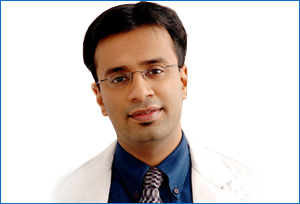ALL ABOUT ZYGOMATICOXILLARY ARCH FRACTURE
Zygomaticoxillary Arch fracture, also called quadripod fracture and also known as tripod fracture earlier is made up of four components: The lateral orbital wall found either at the zygomaticofrontal suture along the wall, inferiorly present at the separation of the maxilla and at zygoma which is present at the anterior maxilla and at the orbital floor present at the infraorbital canal.
Cause Of The Zygomaticoxillary Arch Fracture
The main cause of the fracture is generally the direct hit to the malar part of the cheek that is caused during any assault. The paired zygomas have two attachments, each fixed to the cranium and the other two attachments to the maxilla that makes the lateral walls as well as the orbital floors. These complexes are called as the zygomaticomaxillary complex, where the bones are situated at the top and transverse maxillary has zygomaticomaxillary and zygomaticomaxillary sultures, whereas the lateral and the vertical maxillary bone contains the zygomaticomaxillary as well as the frontozygomatic sultures. It was earlier called as the tripod fracture, although it did not include the subsequent association to the zygoma connected to the sphenoid bone.
Signs And Symptoms Of ZMC Arch Fracture
The fracture is usually seen as a reduction in the projection of cheeks, that increases the width of the facial area. In most of the cases, the cheeks lose sensation in the upper lip side because of damage to the infra-orbital nerve injury. Other symptoms include issues like:
- Bruises on the face
- Soft tissue gas
- Trismus
- Swelling
- Peri-orbital ecchymosis
- Diplopia
- Issues with Mastication
- Ophthalmoplegia, etc.
Treatment And Prognosis
The treatment of the ZMC arch fracture is a proper cosmetic surgery. It begins with the appointment of the surgeon for treating the problem as the first step is treating the fractures conventionally. Later, internal fixation and open reductions are done in those cases that are extreme and are severely angulated. The main motive of carrying out this fixation is to restore the previous appearance of the face. Special care is taken for keeping the position of the malar eminence intact and reducing the orbital volume of the face by keeping the actual alignment of sphenoid as well as zygoma. If the alignment is not corrected properly, it can lead to rotating malformation, which can lead to increase in the volume of the orbit, thus causing the eye to go deeper inside.
Fractures with displacement problems need a surgery that involves fracture reduction that is carried out with microplates, miniplates and screws. This approach is used to depress the zygomatic fractures. Further treatment can be undertaken post- surgical facial asymmetry.
The main objective of the treatment of the zygomatic fracture comprise:
- Restoring the actual facial contour
- Restoring normal sensory function of the nerve
- Restoring the normal position of the globe
- Restoring the proper function of the masticatory
The indications that is required to be repaired for the zygomatic complex fracture comprise of:
- Instability of the fracture
- Dislocation of the fracture
- Chewing or sudden mandibular movement
- Changes in the facial contour
- Diplopia
- Shortfall of sensory nerve
As per the reports, 10-50% of all the zygomaticomaxillary complex fractures need no surgical involvement as such. This is apt for the fracture that are minutely displaced or that are not at all displaced from their position. The person should be strictly forbidden from blowing their nose at the time of medical care. This can allow air that can be forced to the retrobulbar space of the facial area and lead to pain and visual loss, which can be permanent.
Surgical Care
Usually it is suggested to avoid surgery at the times of maximum edema but recommended before the union of the displaced bony fragments and damage of the soft tissues into bony defects. Most of the surgeons recommend surgical operations before the formation of the scar tissues. As a usual guideline, the surgery should be carried out within 3 weeks from the date of the damage.
Closed reduction treatment process is also a method of choice that can be used for almost all the zygomatic fractures. Most of the simple techniques like exerting pressure under the zygomatic arch and settlement of the bones in the anatomic position can be hindered by the disappointing cosmetic surgery results and rigid diplopia. Even though open techniques that are used correctly are preferred, some closed reduction treatment process can be used for the isolated arch fractures.
The diet, for several weeks, that shall be generally given to the patient at the time of surgery should be liquid like drinks, juices and soft diet that does not require chewing. A dietician can better help you with the diet plan.
Consultation
As far as options for treatment is concerned, Dr. Debraj Shome is one of the most reputed and leading doctors in India, who is best at providing solutions to the issues leading to cosmetic surgery. When it comes to ZMC arch fracture, you can surely consult him as he is one of the best we have.


